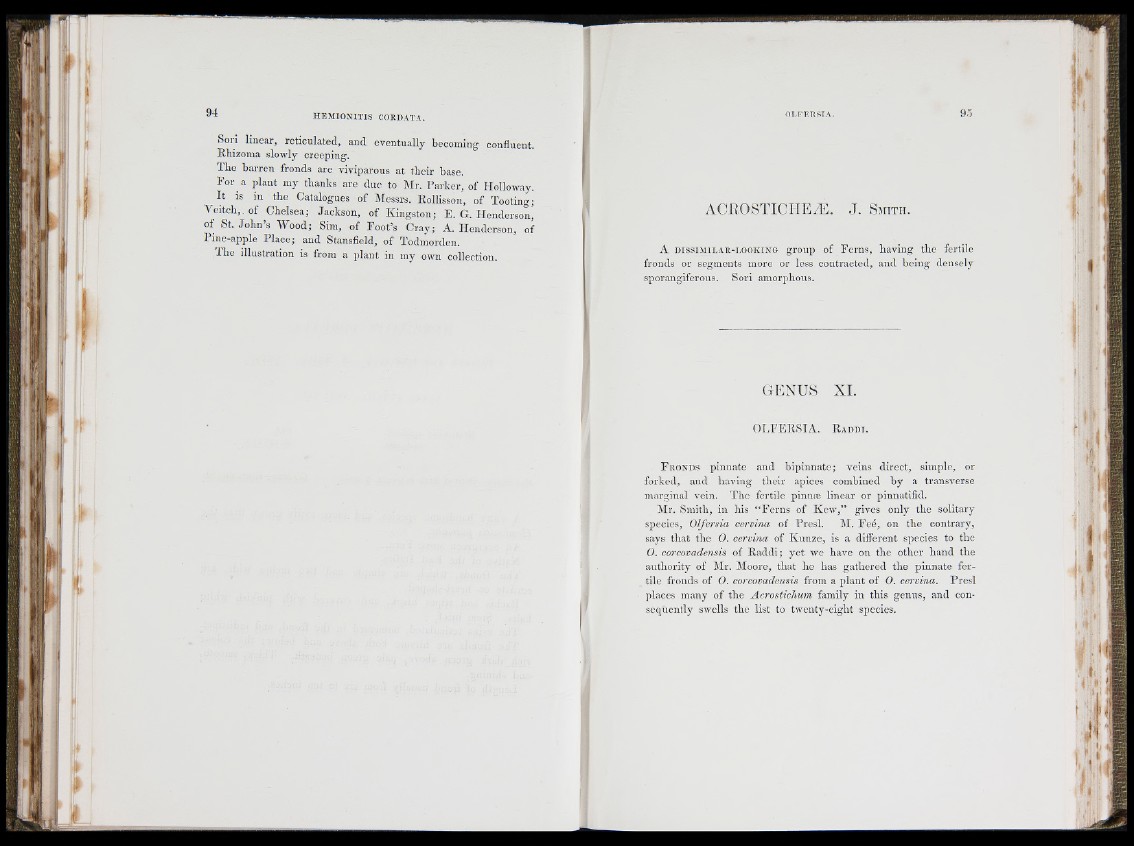
i i i -
i'. !» ;
¡4 .
Sori linear, reticulated, and eventually becoming confluent.
Khizoma slowly creeping.
The b arren fronds are viviparous at their base.
F o r a iflant my thanks are due to Air. P a rk e r, of Holloway.
I t IS in the Catalogues of Messrs. Rollisson, of Tooting;
Veitch, of Chelsea; Jackson, of Kin g sto n ; F . G. Henderson,
of S t .J o h n ’s Wo o d ; Sim, of F o o t’s C ray ; A. Henderson, of
Pme-apple P la c e ; and Stansfield, of Todmorden.
I he illustration is from a ¡slant iu my own collection.
ACROSTICTTEÆ. J. S m i t h .
A DissiMiLAR-i.ooKiNG groigs of F cm s, having the fertile
fronds or segments more or less contracted, and being densely
sporangiferous. Sori amorphous.
GENUS XI.
O F F E R S IA . R a d d i.
F r o n d s pinnate and bip in n a te ; veins direct, simiflc, or
forked, and having their apices combined hy a transverse
marginal vein. The fertile ¡linnæ linear or ¡sinnatifid.
Mr. Smith, in his “ F e rn s of K ew ,” gives only the solitary
sjiecies, Olfcrsia cervina of Pre sl. IM. Fe e , on the contrary,
says th a t the 0 . cervina of K u n z e , is a different species to the
O. corcovadensis of R a d d i; y e t we have on the other h an d the
authority of Air. Moore, that h e has g athered the pinnate fe rtile
fronds of 0 . corcovadensis from a jjlant of O. cervina. P re sl
])laccs many of the Acrostichum family in this genus, and consequently
swells the list to twenty-eight species.
i I'